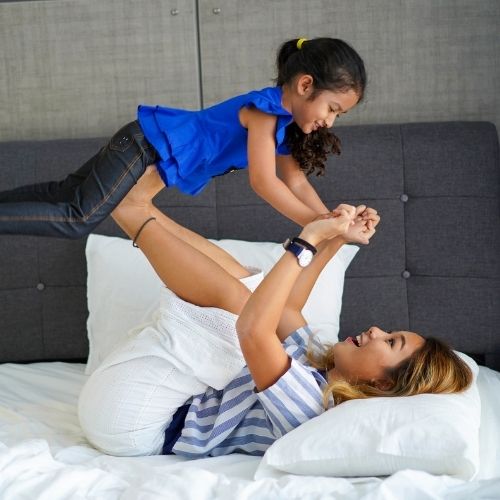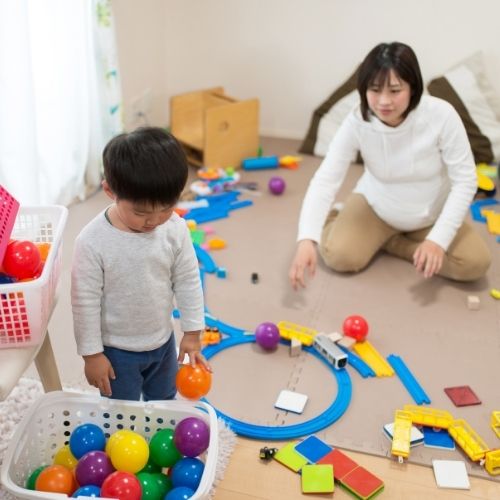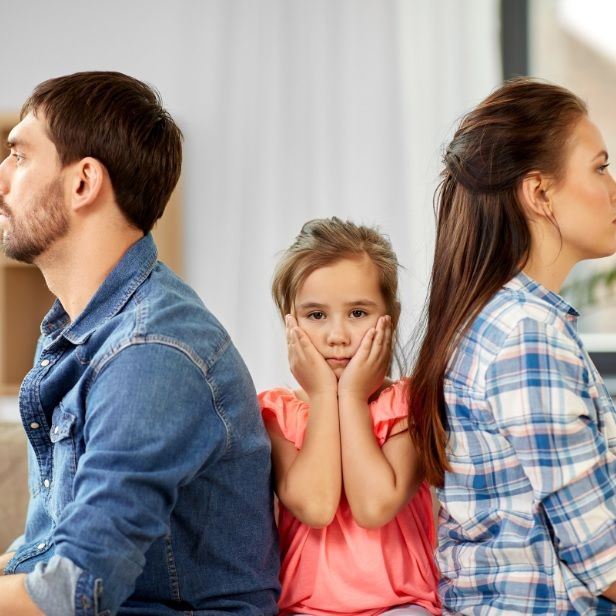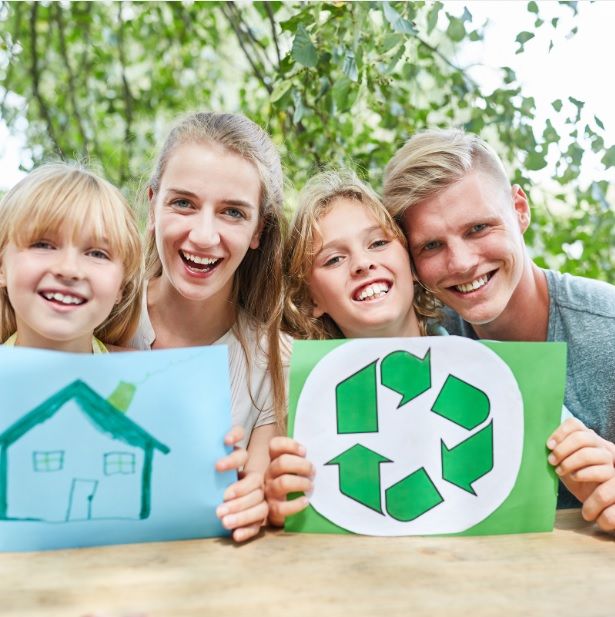First, it was minimalist living. Now we have parenting and minimalism in the same sentence. Here is everything you need to know about the latest minimalist parenting approach.
There is a new parenting approach in town, and it’s called minimalist parenting. Never did I think that parenting and minimalism could go hand in hand. Think about it. In our present consumeristic world, doesn’t parenting seem to be all about ‘more’?
More ideals, choices, decisions, material possessions and schedules. All with the belief that it is essential for the well-being of our children. In our constant struggle to provide our little ones with the best, we seem to have resorted to a ‘maximalist style of living’ where ‘more is better.’
However is that really the case? Is ‘more’ of everything the way to live?
The minimalist parenting style seems to be an antithesis of what we currently believe. After years of living with ‘more’, the concept of minimalist parenting comes as a breath of fresh air. Let’s take a look at what minimalist parenting is about.
What is Minimalist Parenting?
The term minimalist parenting was first introduced in 2013. In “Minimalist Parenting: Enjoy Modern Family Life More By Doing Less” written by Christine Koh and Asha Dornfest in their
The concept challenges or rather encourages parents to weed out the clutter (schedules, possessions, and choices) in their lives. And in doing so, identify the things that bring joy and meaning to one’s life. They believe that parents can enjoy a better parenting experience by focusing on the factors that are truly important to them.
Similar to minimalist living, minimalist parenting is all about simplifying life. This means editing and deleting actions, behaviors, and activities to remove the constant background noise. However, unlike the minimalist lifestyle, this technique has a wider angle. It includes both the tangible (material possessions) and intangible sources such as play, schedules, disciplinary methods, and behavior.
In short, parenting and minimalism mean doing less equates to happier families.

Parenting and Minimalism – Why We Need To Embrace Minimalist Parenting

Picture a performer, juggling balls while answering questions from a panel of judges. That’s parenting!
There is a constant clamor in our heads with too many things (and people) vying for our attention. We have so many choices and decisions to make which often add no value to our lives. In fact, it eats into the time we could have positively directed towards our priorities. This may be playing with children or getting work done.
Think of minimalist parenting as something similar to Marie Kondo’s KonMari technique. It encourages us to declutter our minds and lives. Discard schedules, strategies, and parenting ideals that cause undue stress. In doing so, we retain and surround ourselves with the essentials that add a spark of joy and value to our lives.
Simply put, out with the bad and in with the good! This process makes for a more meaningful and joyful parenting experience.
Minimalist Parenting Technique – Getting Started
The goal of minimalist parenting is to maximize your happiness by minimizing your clutter. However, unlike decluttering a house, parenting by minimizing is not as easy as it sounds.
How do we know what to get rid of and what to keep?
To start you off on this journey, our experts have some tips for you. We know that to declutter your life, you must get these 4 things right.
Understand Yourself
Answer this: “What values, beliefs and traditions would you like to uphold within your family?” Your answer can help you cull out the non-essential parts of your parenting journey.
If you think about it, you will find that much of your parenting actions, values, and beliefs are tied up with how you were raised. How many times have you found yourself saying “I sound just like my mom/dad!”
You may also be influenced by society and current trends.
The good news is, you have the power to choose what is best for your family. You decide the practices to be continued (bedtime story-telling) and those to be rid of (micro-managing your child’s play). Minimalism and parenting mean knowing your outcome and what is important to you.
By learning about yourself, you will know your idea of a happy parenting journey and work towards creating it.
Understand Your Family
A family is made of many unique personalities. Each member is different in terms of their likes, dislikes, and interests. When planning to embrace minimalist parenting, keep in mind these differences. Your parenting approach must create an environment which provides your family the space to grow and learn new things.
Trust Yourself
Every parent has a voice inside telling them ‘what is best for their child.’ It is a voice that tells us when children are sick or warns us that particular advice is not best suited to your child.
It’s time to trust that inner voice. Your instinct is more attuned than an external opinion even if it comes from well-meaning sources or those we read online.
No one knows your child better than you. Parenting is not a one-size-fits-all approach. Nor should it be. What is good for one parent may not be what works best for you. Trust yourselves and drown out the cacophony outside.
Optimize Your Information Processing
Each of us is different in the way we process information and make our decisions. For instance, some rely on extensive research, checking reviews, visiting stores, and comparing options. Others rely on professional authority (doctors) or the opinion of friends and family while some tend to follow the crowd.
The key is to start at your baseline method of information processing and listen to your inner voice. And when deciding, ensure that it aligns with your values and your family’s personality.
Also, remember that you must be open to making adjustments to your choices. Even minimalist parenting requires adapting to the changing needs and circumstances of your family.
Parenting And Minimalism – How To Be a Minimalist Parent?
By combining parenting and minimalism, the hope is to focus on family values. Indeed, the outcome is to improve and increase the time spent together and create more room for joy and creativity.
So how can we do more by doing less?
Here are some ways of practicing minimalist parenting.
Decluter
My kids have too many toys! This is probably true in many households. The fact that I have to remind my kids to clean up their toys is stressful for me and them.
The solution – declutter their rooms and combine parenting and minimalism.
Spend some time going through all their toys. Decide which ones are the current favorites and leave them out in easily accessible boxes. Less favorite ones can be put away in a storage cupboard and brought out when needed.
Unwanted and unused toys can go to friends, be sold in a garage sale or donated to charities. The result, a much cleaner space with less stuff to clean up. Another upside to this, it reduced screen time as the toys were more visible and accessible.

Reduce Consumerism
Our children often associate happiness with materialism. While it is understandable, the downside is, the novelty wears off sooner than we can get over the hole in our pockets.
Rather than ‘buying’ our child’s happiness, let’s work towards spending time together. To practice a minimalist parenting outcome plan for simple family vacations and outings. Local parks, museums, and attractions are often free and great fun. Organize games and movie nights to spend quality time and make your child feel loved and important!
Parent Less
Too much of anything is never good. As parents, we may be over-protective and micromanage our child’s life. As a result, we raise children who are not confident, independent, and with no sense of responsibility. We clip their wings, even before they fly!
Although hard, it’s necessary when combining parenting and minimalism to avoid:
Hovering – to teach them to fall and get up.
- Assistance – so they learn and become independent.
- Entertaining them – to allow them to explore their creativity, interests and strengths.
- Deciding for them – to give them autonomy over their choices and decisions.
By parenting less, we give our children the ability to explore and learn by themselves. It helps them to discover and nurture their abilities, and develop skills to overcome challenges.

Conclution
In minimalist parenting, we are consciously prioritizing happiness over societal expectations and routines. By combining parenting and minimalism, we can experience a more meaningful and joyous parenting journey. Child-Centered Design: Modern Parenting would be a great read for you, check it out.
If this article has resonated with you, leave a comment. Or, read more from our team with some awesome parenting tips and advice on a variety of topics.
My name is Andrea Thompson and I’m a home based freelance writer. I’m 23 years old, married to my best friend, and mother to a wonderfully independent and opinionated 3 year old girl and step-mother to a sweet seven year old boy. I live in a tiny, little town in Kentucky, where I spend my free time fishing with my kids.
Writing has always been my passion, which I followed through high school, and for a while in college. Life happened, and once I discovered we were pregnant, I switched directions; opting for the healthcare industry because of the stability.
Finally, years later, I was in a place where I could leave the day job that never truly made me happy, and pursue my dreams. I’ve built, and am still building, my writing career from scratch. But, I’m passionate and I’m good at what I do. And, in the end, I can prove to my daughter that she can do anything she wants with this life.





